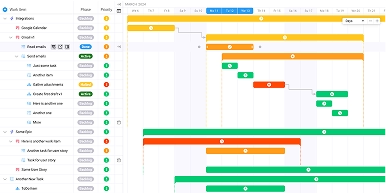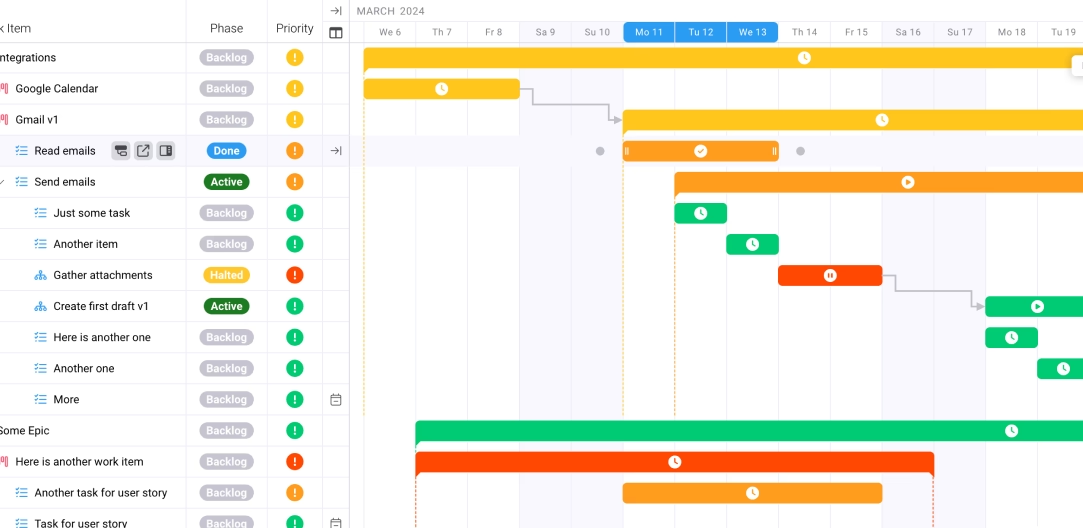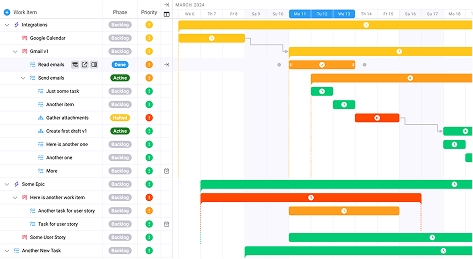
Complete Cybersecurity Guide for Small to Medium IT Service Providers
Key takeaways:
- Strategic Positioning: Transform cybersecurity from a cost center into a competitive advantage and revenue driver for your IT service business
- Scalable Framework: Implement the six-pillar security approach that grows with your client base without exponentially increasing overhead
- Client Value Creation: Develop security offerings that demonstrate measurable ROI while positioning your firm as an indispensable strategic partner
- Operational Excellence: Build security processes that enhance rather than hinder your team’s productivity and client service delivery
Worldwide cybercrime costs are estimated to hit $10.5 trillion annually by 2025, yet many small to medium IT service providers remain unprepared for the escalating threat landscape that defines our digital economy. This complete cybersecurity guide for small to medium IT service providers reveals the counterintuitive truth: your clients aren’t just relying on you for technical expertise—they’re trusting you to be their first and last line of defense against an invisible enemy that operates with military precision and unlimited patience.
While industry giants invest millions in dedicated security teams, IT service providers managing 50-500 employees face a unique paradox. You’re responsible for protecting not just your own organization, but dozens or even hundreds of client environments, each with distinct vulnerabilities and compliance requirements. 94% of SMBs consider cybersecurity essential to their operations, yet 40% of SMBs say that a lack of skilled security personnel is a barrier to maintaining a security posture.
The Current Challenge – What’s Broken in the Industry
The cybersecurity landscape for IT service providers has fundamentally shifted. Global cyber attacks continue to rise, with the average number of cyber attacks per organization per week reaching 1,876 in the fourth quarter of 2024—a staggering 75% year-over-year increase that shows no signs of slowing.
Traditional security approaches fail IT service providers because they were designed for single-organization environments. When you’re managing security across multiple client networks, each with different technology stacks, compliance requirements, and risk tolerances, conventional wisdom becomes a liability. 51% of SMBs surveyed report keeping on top of new threats as their main challenge, while simultaneously managing client expectations and operational demands.
The Multi-Client Security Paradox
IT service providers face three interconnected challenges that compound traditional cybersecurity difficulties:
Resource Fragmentation: Unlike enterprises with dedicated security teams, your security expertise must scale across multiple client environments simultaneously. By 2025, there will be 3.5 million unfilled cybersecurity jobs globally, making it nearly impossible to hire specialized talent for each client account.
Shared Responsibility Complexity: When breaches occur in client environments, determining liability becomes a legal and operational nightmare. MSPs increasingly become attractive targets precisely because successful attacks can cascade across multiple client organizations. MSPs have become an attractive target for cyber criminals as they provide access to numerous small and medium businesses through a single point of compromise.
Compliance Multiplication: Each client industry brings unique regulatory requirements—HIPAA for healthcare clients, PCI-DSS for retail, SOX for public companies. Managing compliance across diverse client portfolios requires exponentially more expertise than single-organization security.
The Strategic Framework – The Six-Pillar Approach
Based on extensive analysis of successful IT service providers, the most effective cybersecurity programs follow a six-pillar framework specifically designed for multi-client environments:
Pillar 1: Centralized Security Operations Center (SOC)
Rather than managing security reactively across client sites, establish a centralized SOC that monitors all client environments from a single dashboard. This approach leverages economies of scale while providing 24/7 coverage that individual SMB clients could never afford independently.
Modern SOC platforms use artificial intelligence to correlate threats across client environments, identifying patterns that would be invisible when viewing each client in isolation. When Client A experiences a phishing attempt, your SOC immediately strengthens defenses across Clients B through Z who may be targeted next.
Pillar 2: Tiered Security Service Portfolio
Develop three distinct security service tiers that align with client risk profiles and budgets:
Essential Tier: Basic protection including managed firewalls, antivirus, email security, and monthly vulnerability assessments. Ideal for low-risk clients with minimal compliance requirements.
Professional Tier: Comprehensive protection adding 24/7 monitoring, incident response, employee training, and quarterly penetration testing. Suited for most SMB clients with moderate risk exposure.
Enterprise Tier: Advanced protection incorporating threat hunting, compliance management, business continuity planning, and custom security policies. Reserved for high-risk clients or those with strict regulatory requirements.
Pillar 3: Automated Compliance Management
NIST Cybersecurity Framework 2.0: Small Business Quick Start Guide provides small-to-medium sized businesses with considerations to kick-start their cybersecurity risk management strategy. Leverage frameworks like NIST CSF 2.0 to create standardized compliance processes that can be customized for each client’s industry requirements.
Automation tools continuously monitor client environments against compliance benchmarks, generating real-time reports that demonstrate security posture to both clients and auditors. This transforms compliance from a periodic burden into an ongoing competitive advantage.
Pillar 4: Incident Response as a Service (IRaaS)
More than 30,000 vulnerabilities were disclosed last year, a 17 percent increase from previous figures, making incident response planning critical for every organization. Develop standardized incident response playbooks that can be rapidly deployed across client environments when breaches occur.
IRaaS includes pre-negotiated relationships with forensics experts, legal counsel, and public relations firms. When clients face security incidents, your team orchestrates the entire response, minimizing business disruption while ensuring proper evidence preservation and regulatory notification.
Pillar 5: Security Awareness as a Competitive Differentiator
Human error remains the primary attack vector, with social engineering and phishing continuing to be the most reliable methods for gaining unauthorized access. Transform employee security training from a compliance checkbox into a client retention tool.
Develop industry-specific training programs that address the unique threats each client sector faces. Healthcare clients receive training on HIPAA violations and medical device security, while financial services clients learn about wire fraud and regulatory reporting requirements.
Pillar 6: Threat Intelligence Integration
Gartner predicts that by 2025, 45% of organizations worldwide will have experienced attacks on their software supply chains. Implement threat intelligence feeds that provide early warning about emerging threats targeting your clients’ industries.
Share anonymized threat intelligence across your client base, enabling rapid defense deployment when new attack patterns emerge. This collective defense approach provides small and medium businesses with enterprise-level threat awareness they could never achieve independently.
Implementation Tactics – Five Essential Strategies
Strategy 1: Security-First Client Onboarding
Transform new client acquisition by leading with security assessments rather than treating cybersecurity as an afterthought. During initial consultations, conduct comprehensive security posture evaluations that reveal hidden vulnerabilities and demonstrate immediate value.
Document baseline security metrics for each new client, including patch management status, access control configurations, and backup verification. This data becomes the foundation for measuring security improvements and justifying ongoing service investments.
Project management platforms like those offered by Ravetree can streamline this process by centralizing client data, tracking security milestones, and automating reporting workflows that keep security initiatives on schedule and within budget.
Strategy 2: Proactive Threat Hunting
Move beyond reactive monitoring by implementing proactive threat hunting across client environments. According to a study by the University of Maryland, a cyber attack occurs every 39 seconds, making continuous monitoring essential rather than optional.
Deploy behavioral analytics tools that establish baseline activity patterns for each client environment. When deviations occur—such as unusual login times, unexpected file access patterns, or abnormal network traffic—investigate immediately rather than waiting for traditional security alerts.
Strategy 3: Compliance Automation and Reporting
Automate compliance monitoring and reporting across client portfolios to reduce manual overhead while increasing accuracy. The NIST CSF provides organizations with a structured classification of cybersecurity program goals, making it an ideal foundation for standardized compliance programs.
Implement continuous compliance monitoring that tracks security controls across all client environments, automatically generating reports that demonstrate adherence to industry regulations. This approach transforms compliance from a quarterly scramble into an ongoing competitive advantage.
Time tracking solutions become crucial for documenting compliance efforts and justifying billing for security services. Detailed time records demonstrate the ongoing effort required to maintain security posture while providing transparency that builds client trust.
Strategy 4: Incident Response Orchestration
Develop standardized incident response procedures that can be rapidly deployed across diverse client environments. Create detailed playbooks for common incident types—ransomware, data breaches, insider threats, and supply chain compromises.
Pre-position incident response resources including forensics software, evidence collection procedures, and communication templates. When incidents occur, rapid deployment of proven procedures minimizes client downtime while ensuring proper investigation and recovery.
Strategy 5: Security Training as Client Value-Add
Transform employee security training from a compliance requirement into a client retention strategy. Develop role-based training programs that address the specific threats each client industry faces while demonstrating your deep understanding of their business challenges.
Implement phishing simulation programs that test employee awareness while providing measurable metrics for security improvement. Monthly phishing simulation results become powerful tools for demonstrating ongoing security value to client leadership teams.
Measuring Success – KPIs and Metrics That Matter
Effective cybersecurity programs for IT service providers require metrics that demonstrate value to both internal stakeholders and client organizations. Traditional security metrics often fail to communicate business impact, making it difficult to justify continued investment or premium pricing.
Client-Focused Security Metrics
Mean Time to Detection (MTTD): Track how quickly your monitoring systems identify potential security incidents across client environments. Industry benchmarks suggest best-in-class organizations achieve MTTD of less than 60 minutes for critical threats.
Mean Time to Response (MTTR): Measure the elapsed time between threat detection and initial response actions. Security teams take an average of 277 days to identify and contain a data breach, making rapid response times a clear competitive differentiator.
Client Security Posture Improvement: Document measurable improvements in client security posture through quarterly assessments. Track metrics like patch management compliance, user access reviews, and backup testing completion rates.
Compliance Achievement Rates: Monitor client compliance with industry regulations and internal security policies. Automated compliance monitoring should achieve 95%+ accuracy while reducing manual assessment time by at least 70%.
Business Performance Indicators
Security Service Revenue Growth: Track quarterly revenue growth from cybersecurity services compared to traditional IT support. Successful IT service providers typically see security services generate 30-50% higher margins than basic infrastructure management.
Client Retention Rates: Monitor client retention rates for organizations using comprehensive security services versus those with basic IT support. Security-focused client relationships typically demonstrate 25-40% higher retention rates.
Security Incident Cost Avoidance: Calculate estimated costs avoided through proactive threat detection and response. Document specific incidents where early detection prevented larger business disruptions.
Employee Productivity Metrics: Measure how security process automation affects your team’s productivity. Effective security automation should increase technician efficiency by 25-35% while improving service quality.
Operational Excellence Indicators
False Positive Rates: Track false positive rates from security monitoring systems to ensure alerts remain actionable. Target false positive rates below 10% to maintain team responsiveness to genuine threats.
Client Satisfaction Scores: Monitor client satisfaction specifically related to security services through quarterly surveys. Security-satisfied clients typically score 15-20% higher on overall service satisfaction.
Certification and Training Completion: Track team completion rates for security certifications and training programs. Maintain 90%+ completion rates for core security training across all client-facing technical staff.
Proper resource planning becomes critical as you scale security service offerings. Platforms that help optimize technician schedules and skill allocation ensure you can deliver consistent security services across growing client portfolios without overextending your team.
Future Considerations – Emerging Trends and Next Steps
The cybersecurity landscape continues evolving at an unprecedented pace, driven by technological advancement, regulatory changes, and increasingly sophisticated threat actors. IT service providers must anticipate these changes to maintain competitive advantage while protecting client interests.
Artificial Intelligence and Machine Learning Integration
Gen AI will be the top driver of cybersecurity in 2024, fundamentally changing how IT service providers detect, respond to, and prevent cyber threats. AI-powered security tools will enable small IT teams to provide enterprise-level protection by automating routine tasks and identifying subtle attack patterns human analysts might miss.
However, the same AI capabilities empowering defensive strategies also enhance attacker capabilities. Cybercriminals increasingly use AI to craft more convincing phishing emails, automate vulnerability discovery, and evade traditional detection methods. IT service providers must stay ahead of this arms race by implementing AI-powered defense tools while educating clients about AI-enhanced threats.
Regulatory Compliance Evolution
Cybersecurity regulations continue expanding in scope and complexity, particularly for organizations handling personal data or serving critical infrastructure sectors. The European Union’s NIS2 Directive, various US state privacy laws, and industry-specific regulations create an increasingly complex compliance landscape.
IT service providers must develop expertise in regulatory interpretation and implementation to guide clients through compliance requirements. This expertise becomes a significant competitive advantage as organizations seek partners who can navigate regulatory complexity while maintaining operational efficiency.
Supply Chain Security Imperatives
Supply chain attacks represent a growing threat vector that requires comprehensive risk management strategies. Clients increasingly demand transparency about the security practices of their technology vendors, including IT service providers.
Develop comprehensive vendor risk management programs that evaluate the security posture of software providers, cloud services, and hardware suppliers used across client environments. Document these assessments to demonstrate due diligence and provide transparency that builds client confidence.
Zero Trust Architecture Adoption
Traditional perimeter-based security models become obsolete as organizations embrace cloud services, remote work, and mobile device management. Zero Trust architecture assumes no implicit trust based on network location, requiring verification for every access request regardless of source.
IT service providers must develop expertise in Zero Trust implementation, including identity and access management, network segmentation, and continuous monitoring. This architectural shift represents both a significant business opportunity and an operational necessity for maintaining client security.
Managed Detection and Response Evolution
Traditional reactive security monitoring evolves toward proactive threat hunting and automated response capabilities. Cybersecurity professionals increasingly recognize that human-only monitoring becomes impossible at scale when facing thousands of daily attack attempts.
Invest in managed detection and response (MDR) capabilities that combine human expertise with automated threat detection and response. These services become table stakes for serious IT service providers while creating opportunities for premium service pricing.
Effective CRM systems become essential for tracking client security preferences, incident histories, and service customizations across your growing portfolio of cybersecurity relationships.
Cybersecurity Insurance Integration
Cyber insurance requirements increasingly influence client security decision-making as insurers demand specific security controls and regular assessments. IT service providers who understand insurance requirements and can help clients meet coverage conditions gain significant competitive advantages.
Develop relationships with cyber insurance providers and understand their assessment criteria. Position your security services as insurance premium reduction tools while helping clients navigate coverage requirements and claim processes when incidents occur.
Client portal solutions become valuable for sharing security documentation and reports that insurance providers require, creating transparency that strengthens both client relationships and insurance compliance.
Quantum Computing Preparation
While practical quantum computing remains years away, organizations must begin preparing for the eventual obsolescence of current encryption methods. The National Institute of Standards and Technology (NIST) has begun standardizing quantum-resistant encryption algorithms that will eventually replace current cryptographic standards.
IT service providers should monitor quantum computing developments and begin planning for cryptographic migrations that will be required over the next decade. This long-term perspective demonstrates thought leadership while ensuring client environments remain secure as technology evolves.
This complete cybersecurity guide for small to medium IT service providers provides the foundation for transforming your organization into a trusted security partner. By implementing these frameworks and strategies, you position your firm to thrive in an increasingly complex threat landscape while delivering exceptional value to clients who depend on your expertise for their digital security and business continuity.
Frequently Asked Questions
How do I justify cybersecurity service pricing to cost-conscious SMB clients?
Focus on business impact rather than technical features when discussing security investments. Calculate the potential cost of downtime, regulatory fines, and reputation damage that effective security services prevent. Most SMB clients understand that a single ransomware incident can cost more than several years of comprehensive security services. Present security as business insurance rather than a technology expense.
What’s the minimum viable security service offering for small IT service providers?
Start with managed endpoint detection and response (EDR), email security, and monthly vulnerability assessments. These three services address the most common attack vectors while providing measurable value that justifies ongoing investment. Add patch management and employee security training as secondary offerings that complement core protective services.
How can I scale security services without hiring expensive cybersecurity specialists?
Leverage security service providers (MSSPs) who offer white-label services that you can resell under your brand. This approach provides access to enterprise-level security expertise and tools without the overhead of hiring specialized staff. As your security revenue grows, gradually bring more capabilities in-house while maintaining partnerships for specialized services.
What’s the biggest mistake IT service providers make when adding cybersecurity services?
Treating cybersecurity as a technology problem rather than a business risk management issue. Successful security service providers focus on business outcomes—preventing disruption, maintaining compliance, protecting reputation—rather than technical specifications. Lead client conversations with business impact discussions before diving into technical implementation details.
How do I handle security incidents across multiple client environments simultaneously?
Develop standardized incident response playbooks that can be deployed rapidly across any client environment. Pre-position incident response tools and establish relationships with external experts who can provide surge capacity during major incidents. Consider cyber insurance coverage that includes incident response services to supplement your internal capabilities.
What compliance frameworks should I prioritize for my security service offerings?
Start with NIST Cybersecurity Framework 2.0 as your foundation since it applies broadly across industries and organization sizes. Add industry-specific frameworks based on your client portfolio—HIPAA for healthcare, PCI-DSS for retail, SOX for public companies. Focus on frameworks that provide the highest ROI for your specific client base rather than trying to become expert in every possible standard.








